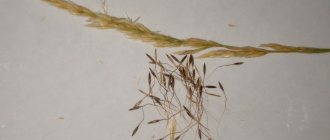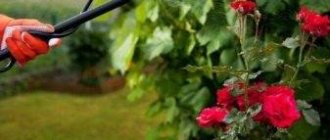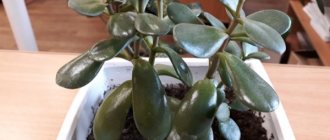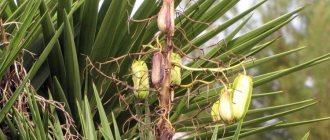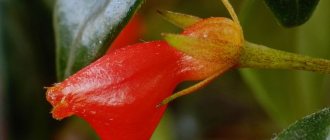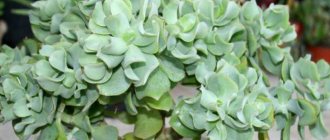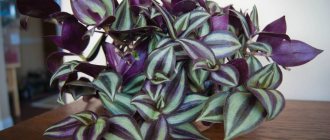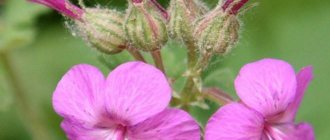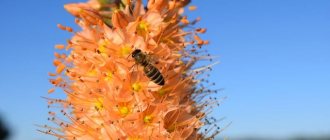Author: Elena N. https://floristics.info/ru/index.php?option=com_contact&view=contact&id=19 Category: Garden plants Published: February 20, 2019Last edits: November 14, 2020
- When to plant
- Growing conditions
- How and when to collect seeds
- Lemon monarda, or citrus fruit (Monarda citriodora)
- Medicinal properties
plant (lat. Monarda) is a genus of perennial and annual herbs of the Lamiaceae or Lamiaceae family, which includes about 20 species native to North America, where they grow from Canada to Mexico. The monarda flower was named by Carl Linnaeus in honor of Nicolas Monardes, a Spanish doctor and botanist who published a book in 1574 describing the plants of America. Monardes himself called the Monarda virginian soul or Canadian oregano. In Europe, monarda began to be grown as an essential oil crop, and by the 19th century it became widely known throughout the world under the names bergamot, lemon balm or American lemon balm.
Characteristics of the monarda
There are more than 20 varieties of monarda. Almost every species can be grown in the garden. Popular varieties of ornamental crops:
- Lemon or citrus monarda. The height of the annual is 15-95 cm. The leaf blades are lanceolate. The inflorescence consists of 5-7 whorls with small lilac flowers. The flower can be used as an ornamental or spicy plant.
- Lambada. The hybrid was developed by Dutch scientists. A pronounced lemon aroma emanates from the leaf blades of the plant.
- Spot monarda (horsemint). It is distinguished by the amazingly bright colors of its leaf blades, which are painted in salmon shades. The height of the plant reaches 80 cm.
- Double monarda. A perennial that grows up to 75-80 cm. It has a horizontally growing rhizome. Stems are tetrahedral. The green leaf blades are pointed at the tip and pubescent. Foliage length is up to 12 cm. The color of the stipules is red. Inflorescences are lilac or purple.
Lemon perennial variety
- Fillet monarda. In Europe it is grown as a spice. The height of the stems is 65-120 cm. The foliage is pubescent with thin hairs. The flowers look like tubes and are colored lilac. The inflorescences are spherical, 5-7 cm in diameter.
- Hybrid monarda (monarda hybrida). Combines various varieties, bred in Germany from Monarda double and fistula. The height of the bushes is 100 cm. The inflorescences are painted in violet-purple (Mona Lisa variety), red, white, pink (Pink Lace), burgundy or lavender tones. Popular varieties: Red Monarda, Monarda Bee Pue and Monarda Cambridge Scarlet. Monarda Terry Fairy Tale, Gadenvie Scarlet and Spice look no less impressive.
- Monarda Fireball. A perennial herbaceous plant grows up to 75-80 cm in height. The rhizome of the variety grows horizontally. Inflorescences are burgundy.
Monarda double, lemon, hybrid and fistula: description in the table and photo
Varieties that are cultivated in Russia:
| Name | Description |
| Double | The tallest perennial up to 0.7-1.5 m. The rhizome is long, spreading. Stems are pubescent. The leaves are soft green, with a pattern of red veins. Plates with a pointed end, sparse pile on the inside. The inflorescences are dark pink or purple. In the first month of summer, about 30 flowers appear on them, emitting a strong aroma. The most popular variety, in demand among domestic gardeners. |
| Dudchata (tubular) | The perennial up to 1.1 m has thin root shoots of approximately the same size. In the second decade of summer, snow-white or dark red flowers begin to form on the inflorescences, emitting a spicy orange scent. Honey-bearing variety. Used as a medicine to relieve pathological conditions. Spices are also made from it and added to cosmetic products for facial care. |
| Lemon | Perennial up to 15-80 cm with emerald foliage. The inflorescences are violet and exude a citrus aroma. Flowering can be observed all summer. |
| Hybrid | This includes specimens obtained by crossing previously described species. |
Popular varieties
| Name | Description | Flowers |
| Mahogany | Medium size. Exudes a pronounced pleasant aroma. | Burgundy, petals curled at the ends. Flowering occurs in early June. |
| Adam | Compact sizes. Grows well in both sun and partial shade. | Large, scarlet. |
| Croftway Punk | It also grows well in the shade. | Lilac-pink. |
| Snow White | Tall, but at the same time compact. | Snow-white. |
| Panorama | To preserve the variety of colors of the buds, growing from seeds is preferable. | Pink, dark lilac, raspberry, white, scarlet, lilac. |
| Scarlett | Up to 0.9 m. | Pinkish, fiery red, purple. They bloom in the 2nd decade of summer. |
| Elsise Lavender | Up to a meter. | Numerous, lavender in color. |
| Fireball | Up to 40 cm, with thick stems. | Lush, round, burgundy tone. |
| Schniewitchen | Up to 1.5 m. | Spherical, white. |
| Lambada | Branched subshrub up to 90 cm. | Pink or violet. They emit a lemon scent. |
| Preili Glow | Abundantly branching shrub with straight shoots. | Reddish-blue, collected in inflorescences-baskets. |
| Snowmaiden | Medium size, greenish in color, with straight, long stems. | Immaculately snow-white. The petals are sparse, planted at a great distance. |
| Mrs Perry | Up to a meter. | Large, deep pink. |
| Rose Queen | Up to 88 cm. | Pink, blooms in July-August. |
Monarda: planting and care in open ground
Kufeya - planting and care in the open ground and at home
At home, the crop can be grown from seed material, or by planting pre-purchased seedlings in the ground.
Planting seeds
The timing of planting seed material in open ground depends on the region where monarda is grown. In southern countries this is done in early spring, and in colder countries - in mid-May. Procedure:
- Select a suitable area, dig and loosen the soil.
- Plant the seeds in the dug grooves.
- Sprinkle them with a small layer of soil.
- Moisten the soil generously.
- Cover the planting site with a piece of film until shoots emerge.
- Systematically remove the film for 5-10 minutes for ventilation, and moisten the soil as the top layer dries.
Plants grown in this way are transplanted to another place after a year. Flowering should be expected after 12 months.
Planting seedlings
- Having chosen an area for planting flowers, dig up the soil.
- After loosening the soil, dig holes for the seedlings.
- Pour settled rainwater into each hole.
- Place the roots of the seedling in the hole and fill the resulting voids with fertile soil.
- Moisten the soil at the planting site. You can expect abundant flowering this year.
Growing monarda from seeds
How to sow seeds
In the southern regions, monarda seeds are sown directly into the ground on fine days in February, where they undergo natural stratification over the course of two cold months, as a result of which friendly, strong shoots appear already in April, which only need to be thinned out.
- Salpiglossis: growing from seeds, types and varieties
If there is snow on the site, remove it, cover the area with film to warm the ground, then loosen the soil by adding a little sand to the top layer and, mixing seeds with sand in a ratio of 1:4, sow them. The seeds are also lightly covered with sand on top. The planting depth should be no more than 2.5 cm. You can sow in the ground in the fall, immediately after collecting the seeds, and in the spring you just prick up the seedlings, then in a year the grown and strengthened bushes will bloom. Monarda emerges very slowly.
Seedling care
However, most often monarda is grown in seedlings. In order to obtain monarda seedlings by spring, they are sown in January or February in boxes with soil for vegetable crops, covering the seeds by 2-2.5 cm, and placed in a greenhouse, maintaining the temperature under the film at least 20 ºC. Shoots appear after three weeks, and after another three weeks the seedlings are planted in containers according to a 3x3 or 4x4 pattern to increase the feeding area for them.
Watering and loosening the soil
Perennial garden geranium - planting and care in open ground
Monarda needs moderate and fairly frequent watering. During the dry season, the soil is moistened every evening. In April and May, the decorative crop is watered with warm water.
Double variety
After each moistening procedure, it is necessary to loosen the soil. It is important not to damage the root system. Weeds must be removed from the flowerbed so that they do not interfere with the full growth and development of the crop.
Note! To prevent excessive evaporation of moisture from the ground and the growth of weeds, experts recommend mulching the soil.
Planting monarda
When to plant
Planting and caring for monarda in open ground is not difficult. Monarda prefers to grow in a sunny place protected from the wind, although it also feels good in partial shade. It is not picky about soils, but grows best on light, calcareous soils, while monarda develops poorly in damp and acidic soil. It is best to plant monarda in the spring, but the area for it is prepared in the fall: they dig it up, clear it of weeds, and add 2-3 kg of peat, manure or compost, 20-30 g of potassium salt, 40-50 g of superphosphate per m². and 40 g of lime.
In the spring, before planting, 20-30 g of nitrogen fertilizer is added to the soil for each m².
How to plant
Two months after the emergence of seedlings, when they have three pairs of leaves, the seedlings are planted in a prepared area at a distance of at least 60 cm from each other. Planting of monarda is completed with abundant watering. The seedlings tolerate light spring frosts down to -5 ºC painlessly. Monarda from seeds usually blooms only after a year, but with the seedling method, the most developed specimens can bloom already this year.
Reproduction methods
Monarda is propagated in different ways. Most often, gardeners use the seed method described above, but the crop can also be propagated by dividing the bush, cuttings or cuttings of roots.
Method of dividing the bush
Perennial phloxes: planting and care in open ground
The process is best carried out in the spring, before the plant has time to wake up after a period of dormancy. Procedure:
- Moisten the plant generously and carefully dig it up.
- Using a sharp knife, divide the root system so that a few shoots and part of the root remain from the plant.
- Treat the cut area with wood ash to speed up the healing process.
- Place the cuttings into the prepared planting holes. The root collar should be level with the soil surface.
Propagation by root cuttings
This is one of the most effective ways to propagate monarda. The procedure is best carried out in March, before active growth of shoots begins. Step-by-step instruction:
- Using a sharp shovel, cut off part of the shoots along with the root system.
- Treat the cut area with wood ash.
- Dig holes at intervals of 40-50 cm.
- Plant young plants in the depressions and fill the holes with soil mixture.
- Moisten the planted bushes generously.
Cuttings
Cuttings are harvested at the beginning of summer. To do this, young green shoots 10-20 cm long are selected, and the sections are treated with Kornevin. Cuttings planted in the ground are covered with plastic containers. You can plant them in a greenhouse.
Note! 30-60 days after rooting, the seedlings are moved to a permanent place.
Hybrid view Lambada
Caring for monarda in the garden
Growing conditions
Monarda needs frequent but moderate watering, especially in hot weather, otherwise there is a danger of the plant becoming infected with powdery mildew. During peak heat, daily watering may be necessary. In addition, in hot and dry summers it is necessary to mulch the area with monarda with leaf humus or peat. Regularly loosen the soil around the monarda bushes and remove weeds.
Growing monarda also involves feeding the plant with granulated Kemira or Agricola every two weeks from mid-May to early autumn. Monarda also reacts well to organic matter, for example, mullein diluted in a ratio of 1:10. For preventive purposes, in spring and autumn, monarda is treated with Fundazol and copper sulfate.
Reproduction of monarda
Since varietal characteristics are not preserved when growing monarda from seeds, it is most reliable to propagate varietal and species monarda by dividing three- to four-year-old bushes. It is better to do this in April, when the soil warms up well, or in early autumn. The bush is dug up, the roots are cleared from the ground under running water, divided into approximately equal parts, the sections are treated with crushed coal and the sections are planted in holes prepared in advance.
Be prepared for the fact that you will have to replant and divide the bush often, since literally in two or three years the divisions you planted will grow up to a meter in diameter.
Monarda is also propagated using cuttings 8-10 cm long, which are cut from green shoots before flowering. The lower leaves are removed from the cuttings, the upper ones are shortened by a third. Then the cuttings are planted in a box with moist coarse-grained river sand, covered with agril on top and placed in a dark place. Rooting usually occurs within two to three weeks. In the second half of summer, the cuttings are planted in a permanent place.
Pests and diseases
Monarda is a plant that is resistant to any troubles, but with a chronic lack of water it can develop powdery mildew. To avoid this, strictly follow the irrigation regime and be sure to mulch the soil in the area so that moisture does not evaporate from the soil so quickly.
Sometimes monarda becomes infected with the tobacco mosaic virus or rust, a weevil can settle on it, but a developed and well-groomed monarda does not suffer from anything, and pests are repelled by the aroma of monarda and the content of essential oils in its roots.
Feeding and fertilizers
Fertilizing is applied during the growing season and when the crop is flowering. In spring, complex mineral fertilizers are used. For each square meter, 40-45 g of fertilizer is used.
At the end of summer and during the flowering period, monarda needs fertilizing containing phosphorus and potassium. Dry granules are embedded in the soil. The fertilizer gradually dissolves and, when watered, reaches the root system. Fertilizers help stimulate flowering.
During the growing season and flowering time, the bushes need to be sprayed with water and mineral fertilizers.
Advice! To prevent the plant from experiencing stress during the hot period, the leaf plates are treated with Epin solution.
Monarda fistulata
Monarda: description of the plant
Belongs to the genus of perennials or annuals from the Yamnotaceae family, Monarda species.
The stems have many leaves, are erect, tetrahedral or tubular in cross-section, covered with thin hairs. Their height can sometimes be from 80 to 150 cm. The rhizome is long and located horizontally.
The light green leaf blades, on which there are reddish veins, can reach 12 cm, with a width of up to 8 cm, have an oval shape, ending with a sharp tip, are pubescent below and bare or with sparse hairs at the top. The edges of the leaf end in large teeth.
Flowers are on inflorescences, spherical in shape. Each can have up to 30 flowers. In nature they are violet-lilac. As a result of selection, monardas of various colors were obtained: white, pinkish, bright red, purple and others. The bracts are large, leaf-shaped, which are the same color as the petals.
The dry fruits crack and contain 4 small nuts.
Transplanting a plant
An ornamental crop can grow in one place for about 5 years. Then the bushes are replanted. To rejuvenate the flower, dividing the bushes is used. Finding a really good online casino is not so easy now; at first glance, everyone is honest. However, I chose my trusted gambling club on the TOP10 online casino website with a rating of gambling operators. And I was extremely satisfied, since I can play interesting games and quickly withdraw winnings.
To replant, the bush is carefully dug up and transferred to a new hole. The root system is not cleaned from the old clod of earth. In order not to injure and speed up the establishment of the plant, it is replanted using the transshipment method. Monarda planted in a new place is watered abundantly. The soil is carefully loosened and mulched.
Types of monarda with photos
The species diversity of monarda is not too great; according to various sources, the genus includes 16 or 20 varieties with numerous varieties and hybrids.
Monarda doublet
This is the most common variety, cultivated in Europe since 1656. The average height of the bush is 0.8 m. There are a wide variety of color options, including not only plain, but also speckled varieties. In the basic version, the flowers are bright red, with slightly darker bracts. Forms a capitate inflorescence up to 6 cm in diameter, the flowers are small. This variety is often called golden lemon balm or bee bergamot.
Monarda tubularis
A taller variety, the stems of which often grow up to 120 cm. The buds are small, collected in a spherical inflorescence. There can be up to 9 of them on one flower.
There is also a dwarf form of tubular monarda, the height of which does not exceed 35 cm. Its flowers and leaves are very fragrant, with a citrus scent. The base paint is pink or lilac. Fillet monarda is widely used in cooking for flavoring meat dishes, tea, and as a flavoring agent in the production of vermouth. It has medicinal properties aimed at improving digestion, helping with coughs and lack of appetite.
Monarda lemon
It also has a decorative appearance, however, it is most valued for its particularly strong odor from all above-ground parts of the plant. Its aroma combines the smells of citrus zest and mint leaves.
Monarda promiscuous
In gardening culture it is less common than others, it blooms in a lavender lilac tone, it is better known under the name “oriental bee balm”.
Popular ornamental varieties
- "Mahogany" is an early flowering variety with dark red inflorescences, the petals of which are curled at the ends. It blooms for a long time, until frost.
- "Adam" is a very light-loving varietal variety that blooms in bright scarlet. Does not tolerate even light shading.
- Croftway Punk" is one of the most spectacular varieties in flowering with charming pink-lilac buds.
- “Snow white” - produces snow-white flowers, looks especially charming in mono-plantings.
- “Panorama” - has a rich palette of colors and an attractively exotic shaggy flower shape.
Tea brewed with the addition of monarda herb is given to patients with fractures and other injuries of the musculoskeletal system. You can use both dried and fresh raw materials.
Pests and diseases
Monarda is not susceptible to pest attacks because its essential oils repel insects. However, due to improper care, the crop may suffer from powdery mildew, which occurs due to waterlogging of the soil, and rust.
To get rid of powdery mildew, just adjust the watering regime. When bushes are affected by rust, the soil around the flowers is treated with preparations containing copper.
Perennial in landscape design
Possible diseases and pests, ways to get rid of them
The strong aromatic components in essential oils make monarda unattractive to pests and invulnerable to most diseases. The same scent is great for attracting pollinators. But some pests can attack monarda during the most unfavorable seasons. After drought or heavy rains, aphids, mealybugs or spider mites can be found on weakened plants.
If the plant is used for food or for treatment, the use of chemicals is unacceptable, so pests are eliminated by pollinating the bushes and soil with wood ash. Particularly severe lesions can be sprayed with biological products (Fitoverm, Baktofit) according to the scheme: 3 treatments with breaks of 7 days.
Possible diseases of monarda:
- Of the fungal infections, only powdery mildew threatens flowers. Greenhouse plants are especially susceptible to the disease. The disease is provoked by air stagnation and temperature changes. You should also avoid overmoistening the soil.
- Varieties vulnerable to fungal infections are cut back to the soil immediately after flowering.
- Root rot occurs due to overwatering or too much rain. Overmoistening is especially dangerous during cold weather.
- When watering over the leaves, rust may appear. The affected plates should be removed, and irrigation should be carried out so as not to wet the green part of the plant.
Flowering suffers from excess nitrogen fertilizers (mineral or organic). Monarda grows a dense, green bush and does not set buds. Therefore, bushes without fertilizing can show better flowering than with the wrong selection of fertilizers.
When replanted every 4–5 years, the monarda blooms well and does not suffer from anything. Regular thinning of shoots for better ventilation also has a good effect on the health of plantings.
Flowering and care during this period
The flowering period of monarda lasts from mid-summer to September. At this time, flowers with funnel-shaped petals bloom on the bushes, which are collected in dense racemose inflorescences. The color of monarda flowers depends on the variety.
After flowering ends, fruits are formed on the inflorescences that look like nuts. This gives additional decorativeness to plants even in the cold season. After the fruits have formed, you can begin collecting seeds. Their germination capacity lasts up to 36 months.
Important! During the flowering period, the plant needs abundant watering and phosphorus-potassium fertilizers.
Monarda after flowering
How and when to collect seeds
Monarda seeds ripen into nuts in late August or early September. If you want to do breeding work, you can collect them and sow them immediately or grow seedlings that can be planted in the ground in the spring. Or you can save the seeds to sow in a year or two, since the germination period of monarda seeds if properly stored is three years. We remind you that varietal monarda seeds do not retain their parental properties; only species plants are grown generatively.
- Ixia: cultivation and care, types and varieties
Preparing for winter
If you don't need monarda seeds, leave the fruits on the bushes - they will be very useful to hungry birds in the fall. The remains of annual monarda species are disposed of, and the site is prepared for a crop that will be grown next year. Monarda is a perennial winter-hardy, it can withstand frosts down to -25 ºC, but if you are afraid that the winter will be not only cold, but also snowless, insulate the area with a thick layer of mulch or cover it with spruce branches.
Use in landscape design
The crop is planted in flower beds, ridges or on the lawn. Growing monarda flowers in mixborders looks quite impressive.
The plant goes well with rudbeckia, perennial phlox, bells and large daisies. Spreading monarda bushes can be supplemented with cereal plants.
Advice! Monarda bushes can be used to decorate fences and fences.
Perennial looks good on lawns
Hybrid Monarda
Breeders from Europe, the USA and Canada worked to create beautiful flowers of various shades, who bred more than 20 species of beautifully flowering plants. The basis for their creation was Monarda fistula and double. Their numerous stems, on which leaves pubescent below grow, reach a height of up to 1.2 m; the flowers are collected in beautiful spherical inflorescences. They come in all sorts of colors: white, pink, purple, lilac, red, burgundy. Terry monarda receives special attention. It can be purchased at garden stores. It is called “Fairy Tale” and has a beautiful lilac-lilac color.
Useful properties of the monarda plant
The flower contains essential oil, vitamins B and C. The culture is widely used in homeopathy. Monarda essential oil has anti-stress, anti-anemic and antioxidant properties. Its systematic use clears the aorta of atherosclerotic plaques, helps cure radiation sickness, cope with flu symptoms and strengthen the immune system.
Monarda is used in the treatment of:
- otitis;
- cystitis;
- sinusitis;
- pneumonia;
- disorders of the digestive system.
Monarda essential oil helps cope with headaches, foot and nail fungus, and oral ailments. Cosmetologists use monarda to make masks and creams for acne on the skin.
Monarda is a plant that can decorate any garden plot. Caring for the crop is quite simple. By providing the plant with conditions suitable for growth and development, you can systematically admire its abundant flowering.
Preparing the soil and planting site
Monarda is an unpretentious flower. Photos and reports from gardeners indicate its high survival rate and undemandingness to soil composition. But still, some techniques can significantly improve the appearance of the plant and ensure abundant flowering.
Conditions for normal development of monarda on the site:
- Any soil is suitable for garden bergamot except waterlogged soil.
- Preliminary application of lime or dolomite flour improves growth and increases survival rate.
- Monarda grows well even in the shade, but for lush flowering it will require a bright, open place.
- The soil needs to be dug up with the addition of organic matter and fertilizers: humus (5 kg), superphosphate (1 tbsp.), potassium sulfate (1 tsp.) per 1 sq. m. m.
The best acid balance for monarda is considered to be between 5.8 and 6.5 pH. To loosen the soil, you can use perlite, rotted sawdust or bark.
Reproduction of monarda
With proper care, monarda grows quite quickly and therefore its plantations will need to be divided every few years. This happens in the spring, when the plant is just beginning to turn green. The monarda should be divided by first digging around the bush with a shovel along the perimeter of the area that should remain behind the plant. The rhizomes are cut into several parts. Each of them should have several healthy shoots. Next, the monarda is planted as seedlings, fed and watered.
Monarda can also be sown with seeds. They do not have a dormant period and are therefore sown immediately after harvest. Sowing depth is 1-2 cm, area norm is 0.5 g per 1 m². To distribute the seeds evenly throughout the soil, they are mixed with sand and sown at a temperature of about 20 degrees Celsius. The seedlings grow slowly, but as soon as they become more noticeable, they need to be weeded so that they are not oppressed by weeds.
Features of the monarda
A rhizomatous plant such as monarda-bergamot is an annual or perennial. Branched or straight shoots can reach up to 150 centimeters in height. Straight, oblong-lanceolate leaf blades with a serrated edge are usually very fragrant. Small two-lipped fragrant flowers can be purple, light yellow, white, red, or speckled. They are part of dense racemose or capitate inflorescences, which reach a diameter of 6 to 7 centimeters. They are often placed on the shoot one above the other. The fruit is a nut, and the seeds in it remain viable for up to 3 years. You can grow such a plant in the same place for 5 to 7 years. It has very interesting flowers that attract attention, as well as a unique pleasant aroma. Monarda is often added to tea, used as a spice, and is also an excellent honey plant.
Monarda is an ornamental and spicy-aromatic plant
Medicinal properties of Monarda flower
The leaves and flowers of Bee Balm have long been used by indigenous tribes in North America to treat various ailments. The arriving colonists also began brewing teas, tinctures, and making ointments for medicinal purposes. Thus, knowledge about the medicinal properties of the flower spread throughout the world along with the plant itself. Let us describe the beneficial properties of Monarda.
- Treatment of teeth and gums . Herbal tea made from the Monarda grass has traditionally been used to treat mouth and throat infections caused by tooth decay and gingivitis. Therefore, it is an effective ingredient in mouthwash.
- Helps with cuts and skin inflammations. Bee balm is also useful as a topical skin treatment for minor cuts, scrapes and rashes. Monarda is also traditionally used to relieve pain and inflammation from bee stings by crushing the leaves of the plant and rubbing them into the skin.
- Arthritis and joint pain . The balm from the plant can also relieve pain when applied to the skin by increasing blood flow, such as in arthritis or joint inflammation.
- Treatment of colds and flu
- Monarda flower has antimicrobial properties and, like other mint family products, has a calming effect. This makes it a popular home remedy for sore throats and coughs. Try making an herbal infusion of the leaves with honey and vinegar to have on hand the next time you feel sick.
- Stomach problems. This herb is also soothing to the digestive tract, making it a good remedy for indigestion, bloating, and nausea. Try making an herbal infusion of wild bergamot and drink it as a tea.
- Support for the female reproductive system. Renowned herbalists recommend using Monarda to support the body with problems with menstruation, urinary tract infections and candidiasis.
- Anxiety and stress. Monarda tea is relaxing, so it is good to drink if you are feeling anxious or stressed. This drink can also be used as a mild sleep aid.
Application of monarda
The plant is quite often used in group flower beds and mixborders. Looks great in bouquets, as it can maintain freshness for up to three weeks. There is also increased interest in the plant among chefs, who often use the spicy and fragrant plant to complement their own and classic recipes.
Growing monarda seedlings
But in most cases, flowers are planted as seedlings. Why is it carried out in January-February:
- sowing seeds in containers filled with moist soil with trays;
- after sowing, sprinkle soil on top to a thickness of 1.5-2 cm;
- cover with film on top;
- Place in a greenhouse or a dark and warm (at least 20 degrees) place.
The first sprouts will appear no earlier than three weeks later. They wait the same amount of time, after which they pick the plants into boxes or cups. We plant seedlings in containers according to a 4x4 cm pattern. Place them in a bright place and water them regularly.
Sowing in the ground
Flowers from seeds take a long time to germinate, which is why they should be sown in the fall. In the southern regions, planting in the soil can also take place in February. This will allow them to adapt and harden. To do this you need:
- dig up a place for the plant in advance and cover it with covering material. If there is still snow when sowing, you need to remove it;
- loosen the soil and add a small amount of sand to the top layer. Growing monarda from seeds is a process that does not require much effort;
- mix sand with nuts and spread over the soil;
- From above everything is covered with a mixture of sand and earth. The thickness of the covering layer cannot exceed 1.5-2 cm.
In autumn, planting nuts in the ground is carried out in a similar way. In the spring, after shoots have appeared, picking is carried out.
